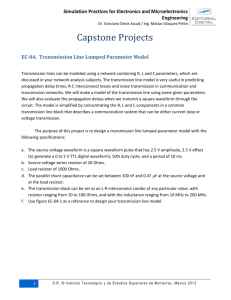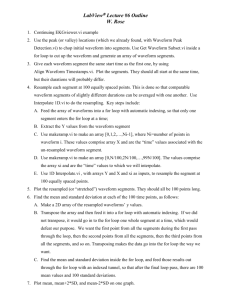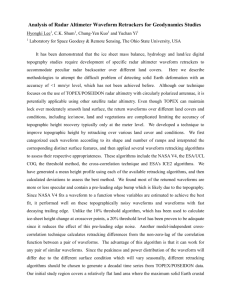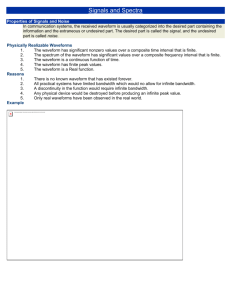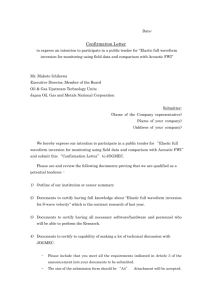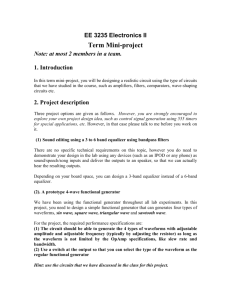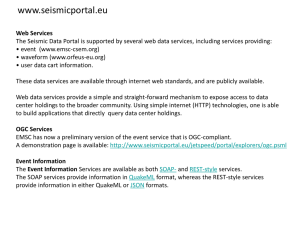Understanding the Essentials of
advertisement
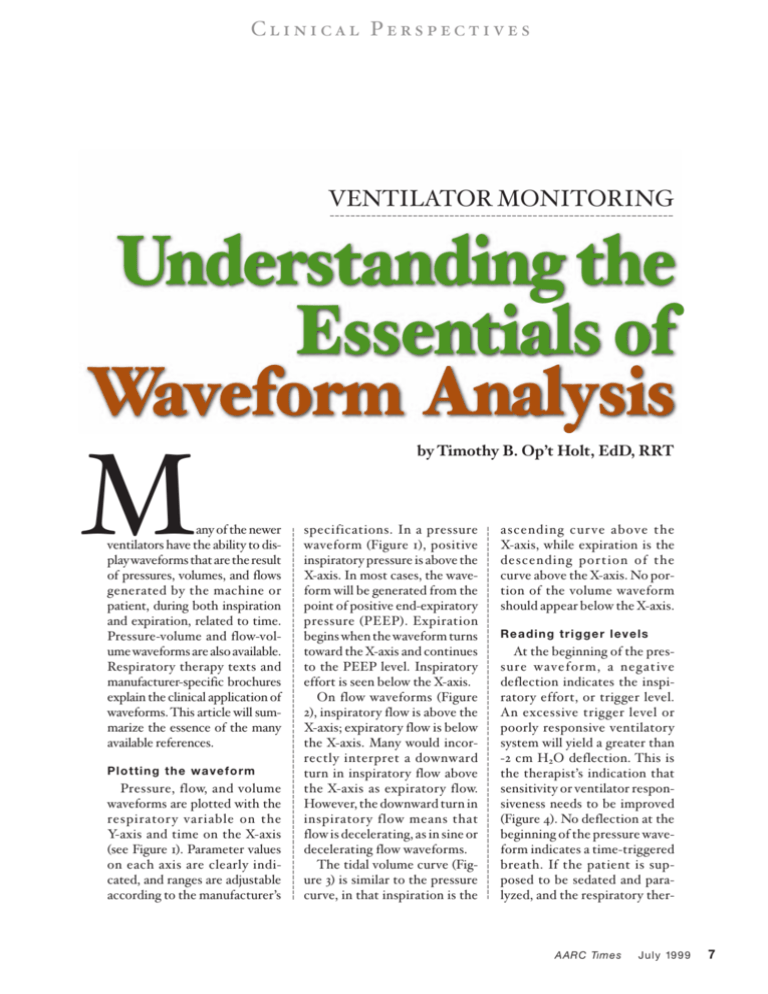
Clinical Perspectives VENTILATOR MONITORING Understanding the Essentials of Waveform Analysis M any of the newer ventilators have the ability to display waveforms that are the result of pressures, volumes, and flows generated by the machine or patient, during both inspiration and expiration, related to time. Pressure-volume and flow-volume waveforms are also available. Respiratory therapy texts and manufacturer-specific brochures explain the clinical application of waveforms. This article will summarize the essence of the many available references. P lo tting t h e w a v e fo r m Pressure, flow, and volume waveforms are plotted with the respirator y variable on the Y-axis and time on the X-axis (see Figure 1). Parameter values on each axis are clearly indicated, and ranges are adjustable according to the manufacturer’s by Timothy B. Op’t Holt, EdD, RRT specifications. In a pressure waveform (Figure 1), positive inspiratory pressure is above the X-axis. In most cases, the waveform will be generated from the point of positive end-expiratory pressure (PEEP). Expiration begins when the waveform turns toward the X-axis and continues to the PEEP level. Inspiratory effort is seen below the X-axis. On flow waveforms (Figure 2), inspiratory flow is above the X-axis; expiratory flow is below the X-axis. Many would incorrectly interpret a downward turn in inspiratory flow above the X-axis as expiratory flow. However, the downward turn in inspiratory flow means that flow is decelerating, as in sine or decelerating flow waveforms. The tidal volume curve (Figure 3) is similar to the pressure curve, in that inspiration is the ascending cur ve above the X-axis, while expiration is the descending portion of the curve above the X-axis. No portion of the volume waveform should appear below the X-axis. R eadin g tr igger levels At the beginning of the pressure waveform, a negative deflection indicates the inspiratory effort, or trigger level. An excessive trigger level or poorly responsive ventilatory system will yield a greater than -2 cm H2O deflection. This is the therapist’s indication that sensitivity or ventilator responsiveness needs to be improved (Figure 4). No deflection at the beginning of the pressure waveform indicates a time-triggered breath. If the patient is supposed to be sedated and paralyzed, and the respiratory ther- A ARC Tım e s J u l y 19 9 9 7 Clinical Perspectives Figure 1. Pressure Waveform Waveform A represents a pressure-triggered breath. Waveform B represents a time-triggered breath. Note the smooth ascent of the waveforms. Baseline may be zero or PEEP. Figure 2. Flow Waveform This is representative of a square wave inspiratory flow pattern. Note that inspiratory flow is above the X-axis and that expiratory flow, which is passive, is below the X-axis. Figure 3. Tidal Volume Waveform Waveform A represents a tidal volume generated by a square wave flow pattern. Note that it ascends smoothly, indicating adequate inspiratory flow. Waveform B represents a spontaneous breath, possibly generated during SIMV. Figure 4. Irregular Pressure Waveform An irregular pressure waveform depicting an insensitive system (A) and the result of an inadequate inspiratory flow (B). apist sees a negative breath starts very soon deflection, this is an after the end of the preindication that the vious breath, autoPEEP is likely, since the sedative and/or muscle waveform represents relaxant is wearing off. proximal airway presFrom baseline (the Xsure, not alveolar presaxis or PEEP), the presFigure 5. Pressure Waveform Depicting Auto-PEEP sure, which is where sure waveform should Pressure waveform A is a time-triggered mandatory auto-PEEP occurs. To ascend smoothly, conbreath with a prolonged expiratory phase. At “B,” expidetermine the presence gruent to the volume ratory pause is implemented. Thereafter, alveolar and of auto-PEEP, the waveform. Should the airway pressure equilibrate, revealing the magnitude of patient must be paswaveform var y from auto-PEEP. sively ventilated. At end that expected, it is likely E n c ou n ter in g expiration, the expiratory pause the result of the patient’s inspia u t o -P E E P or auto-PEEP measuring funcratory effort overcoming the tion is activated. Within a few preselected inspiratory flow. In The pressure waveform this case, it is appropriate to seconds, following the equilibrashould return to baseline before increase the inspiratory flow tion of alveolar and airway presthe beginning of the next inspiuntil the ventilator’s inspirasures, auto-PEEP will appear as a ration. If not, auto-PEEP is sustory flow meets the patient’s deflection above the baseline pected. Even if the waveform demand. pressure. Appropriate measures returns to baseline, if the next 8 A ARC Tımes J uly 1999 Clinical Perspectives Figure 6. Auto-PEEP Auto-PEEP is present when inspiratory flow for the next breath precedes the end of expiration. Quantification of auto-PEEP then requires the expiratory pause maneuver depicted in Figure 5. Figure 7. Flow-Volume Loops Loop A represents obstruction. Loop B represents a normal loop or the anticipated results of bronchodilator therapy. Figure 8. Pressure-Volume Loop Loop A is a spontaneous breath. Loop B is a mandatory breath. Point C is tidal volume. Point D is peak inspiratory airway pressure. Figure 9. Overdistended Pressure-Volume Loop Pressure-volume loop A represents hyperinflation. Loop B represents a lower tidal volume that is less likely to cause hyperinflation. the flow curve to the Xmay then be taken to axis. The shape of the reduce the magnitude of curve should be linear auto-PEEP (Figure 5). from maximum expiraThe flow waveform tory flow (early in exhawill begin at the beginlation) to end exhalaning of inspiration and Figure 10. Pressure-Volume Loops tion. Any bow to the will conform to the Loop A represents normal or increased lung-thorax expiratory portion of selected inspiratory flow compliance. Loop B represents decreased lung-thorax the curve represents air pattern. Combinations of compliance. Slopes of the lines through the end-expiflow obstruction (as in waveforms are common, ratory and end-inspiratory points are the lung thorax obstructive disease). as in synchronized intercompliances. Should the curve fail to mittent mandatory ventiedge of the inspiratory flow wavearrive back at the X-axis before lation, wherein the mandatory form will be tapered, correspondthe next breath starts, autobreaths will have the selected ing to the setting of that particuPEEP exists (Figure 6). waveform, interspersed with the lar function (i.e., Servo 300). The volume waveform is conwaveform of the spontaneous breath. Non pressure-supported Perhaps the most important gruent with the pressure waveform. The same problems indispontaneous breaths will have a aspect of the flow waveform is its cated by the pressure waveform sine wave flow pattern. Pressureexpiratory portion, which repreare illustrated by the volume supported breaths will have a sents passive exhalation (below waveform. During expiration, decelerating flow pattern. In the X-axis). The end of expiration should the volume waveform fail some ventilators, the leading is represented by the return of 10 AARC Tımes J uly 1999 Clinical Perspectives to return to baseline, auto-PEEP is likely present. additional reading Flo w- vo lu m e a n d p re s s ure -v o l u m e wa v e f o rms Chatburn, R.L. (1999). Classification of mechanical ventilators. In R.D. Branson, D.R. Hess, & R.L. Chatburn (Eds.), Respiratory care equipment (2nd ed., pp. 383-389). Philadelphia, PA: JB Lippincott. The combinations of flow-volume and pressure-volume waveforms provide a vast amount of information. The flow-volume curve is represented by flow on the Y-axis and volume on the X-axis. Expiratory flow is represented by the waveform above the X-axis, the opposite of its appearance on the flow-time waveform. Some authors have speculated that the effectiveness of aerosolized bronchodilator therapy can be quantified by observation of the flow-volume waveform. Should the “bowingin” of the waveform become more linear following bronchodilator therapy, it could be assumed that this was the effect of the drug (Figure 7). However, to my knowledge, there is little or 12 AARC Tımes J uly 1999 Pilbeam, S.P. (1999). Mechanical ventilation: Physiological and clinical applications (3rd ed., pp. 42-61). St. Louis, MO: Mosby. no research on the validity of using passive expiratory flow patterns to determine the effects of bronchodilators. The pressure-volume curve provides a wealth of information on the effectiveness of ventilation. This curve places tidal volume on the Y-axis and airway pressure on the X-axis. Observation of the pressure-volume curve reveals information about the tidal volume, airway pressure, breath source, compliance, and potential for lung injury. The tidal volume is indicated by the highest point of the loop above the X-axis. The airway pressure is indicated by the right- or left-most point of the loop. Loops pointed up and to the right represent mandatory or pressuresupported breaths. Loops rising up the Y-axis represent spontaneous breaths (Figure 8). A negative pressure deflection at the beginning of inspiration represents the inspiratory effort. One of the most striking features of the pressurevolume loop is its shape in the presence of overdistention. In the presence of excessive mandatory tidal volume, the loop will suddenly turn to the right toward the end of inspiration, forming a “beak” (Figure 9), which resolves at the beginning of expiration. The remainder of the cur ve will return to its normal shape. The beak represents hyperinflation (excessive tidal volume and pressure) that has the potential to result in lung damage due to excessive shear forces. This event is more common in lung diseases such as acute respiratory distress syndrome (ARDS) due to decreased compliance. The therapist should reduce the tidal volume until the beak is eliminated. Compliance of the lung-thorax system is indicated by the slope of the line drawn through the origin of the loop, and the point at which exhalation begins. Loops that lie more flat represent a low lung-thorax compliance. Loops that are more upright (i.e., cling more closely to the Y-axis), represent an increased lung-thorax compliance (Figure 10). The analysis of waveforms and use of the resultant data can and does make a difference in patient care. The respiratory therapist should observe and interpret these waveforms and provide indicated therapy based upon these data. b Timothy B. Op’t Holt is associate professor of cardiorespiratory care at the University of South Alabama in Mobile, AL, and a trustee on the National Board for Respiratory Care.

